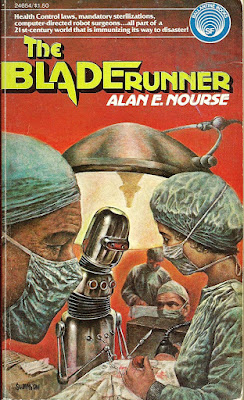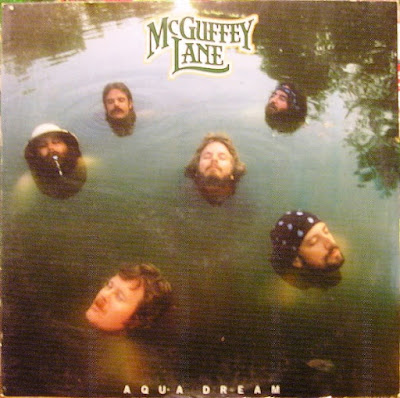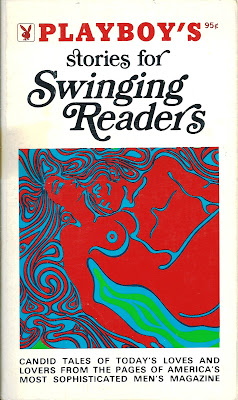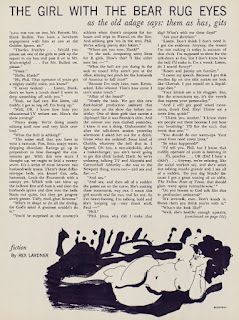February 2022
Sunday, March 6, 2022
Beat up paperbacks
Beat Up Paperbacks
February 2022
February 2022
Last month I went into a little local bookstore, that primarily has paperbacks in its inventory, and acquired some volumes in a variety of genres.
At only $2 each, I don't mind some bent corners and pages, and small tears and rips, and maybe some magic marker stains, and some cracking of the binding......
The good thing about these old paperbacks is that, with the exception of 'Jitterbug', they're all short (under 300 pp.).
In the upper right corner, the book 'Black Bitches Dancing with Charlie', by Chuck Bianchi, was published by Pinnacle Books in 1989. It's a novel that is based on the real-life experiences of a man named Robert Jackson, who served in the Vietnam War. It has one of the most attention-getting titles of any paperback I've ever seen !
Labels:
Beat up paperbacks
Friday, March 4, 2022
132,000 Roman Catholics
132,000 Roman Catholics
from National Lampoon, May 1974
from National Lampoon, May 1974
An entertaining satire of the 'army men' advertisements that appeared in comic books during the 60s and 70s................
Labels:
Roman Catholics set
Wednesday, March 2, 2022
Book Review: The Bladerunner
Book Review: 'The Bladerunner' by Alan E. Nourse
I first wrote this review in September, 2008 and posted it to amazon.com soon thereafter. It stayed up for a good six or seven (?) years before abruptly being taken down for violating amazon's 'community guidelines'. I never was told why, but I suspect my reference to William Burroughs being a pervert (below) may have been the Trigger.
Anyways..........
‘The Bladerunner’ first was published in hardback in October 1974 by David McKay. A mass-market paperback version (213 pp.) was issued by Ballantine in December 1975, with cover art by Karl Swanson.
Sadly, both the hardcover and paperback versions are long out of print, and have steep asking prices. An eBook edition is available from Prologue Books.
Alan E. Nourse (1928 – 1992) published a sizeable collection of SF short stories and novels, most of which were aimed at juveniles (the term ‘Young Adult’ wasn’t really in use in that era) throughout the 50s, 60s, and early 70s. A physician, Nourse often addressed medical themes in his works.
I well remember purchasing his short story collection ‘The Counterfeit Man’ (1963) as one of the perennial SF titles offered to kids as part of the Scholastic (paperback) Book Club purchasing program. I suspect most of my fellow Baby Boomers also will remember ‘The Counterfeit Man’ from their own childhoods.
‘The Bladerunner’ has a confusing history with regard to its title. A screenplay based on Nourse’s novel, and written by William Burroughs, failed to attract attention from the major studios when shopped in the mid 70’s; subsequently the screenplay was adapted to a novelette and published in 1979 as ‘Blade Runner: A Movie’.
From what I remember from reading 'Blade Runner: A Movie' back in '79, it too-clearly reflected Burroughs’s fixation with pederasty, and even the more ‘progressive’ studio execs probably felt uncomfortable with the thought of catering to the fantasies of a pervert, however great his standing in the literary world.
I’ve no idea if Warner Bros. paid any sort of licensing fee to Nourse or Ballantine / Del Rey for using the title for its 1982 film adaptation of the Philip K. Dick novel ‘Do Androids Dream of Electric Sheep ?’. If not, they certainly should have, because ‘The Bladerunner’ is a good novel in its own right despite having the misfortune to share a title with one of the most influential SF films of the past 50 years.
‘The Bladerunner’ is set in approximately 2015, after the 1994 ‘Health Riots’ marked the economic collapse of the American health care system. Anyone seeking treatment in any facility may find themselves subjected to sterilization under Eugenics Laws designed to reduce the incidence of disease in the population. Unsurprisingly, many elect to have their medical needs met at home using a clandestine system of care performed by idealistic MDs who disagree with the System.
‘Bladerunner’ refers to young men who serve as couriers for contraband drugs and surgical supplies between patients and the doctors, most of whom have entirely legitimate practices in hospitals and clinics in the wealthier sections of the city.
Billy Gimp is one such Bladerunner, working for surgeon ‘Doc’ John Long and his able nurse Molly. The trio sets out several times a week to lower-income neighborhoods of New York and its surrounding environs to conduct kitchen-table tonsillectomies and other surgical procedures. Billy and his companions must be watchful for surveillance by the Big Brother-ish Health Control police, since a conviction for providing black market health care can result in imprisonment for Billy, and the loss of a license for Doc.
When Billy does find himself under surveillance, he quickly learns that it is not unique to his own bladerunning operation, but rather, has expanded to the entire underground medicine infrastructure. Does the increased scrutiny by the authorities have anything to do with the ‘Shanghai Flu’ ? Could the Flu be the start of an epidemic of a new and lethal disease, and his clients in the black market the medical equivalent of canaries in a coal mine ? Can the authorities set aside their ideology to ally with the bladerunners, and stop a catastrophe from snuffing out half of the population of the United States ?
In my opinion ‘The Bladerunner’ is a very readable exemplar of first-generation cyberpunk SF. It shares with the genre the near-future setting, the psychological backdrop of paranoia and alienation from ‘conventional’ society, an urban megalopolis subject to pervasive government oversight, and a sense of the ‘street finding its own use for things’.
Billy Gimp is a prototypical cyberpunk ‘hero’, with his club foot, trashed apartment, and contempt for authority sharpened by a life of deprivation in the grimy alleys of the Lower City. The novel lacks the emphasis on sex, (illegal) drugs, and rock n’ roll found in the cyberpunk Canon (this is a novel intended for young adults, after all), but it serves as a kind of predecessor to ‘Neuromancer’, still a decade away from hitting the bookstore shelves.
And….. I guess it’s just coincidence that there’s a Molly in 'The Bladerunner', and a Molly in 'Neuromancer' ? ….hmmm…
Labels:
The Bladerunner
Monday, February 28, 2022
Supernature by Cerrone
Cerrone
Supernature
February 1978
Supernature
February 1978
Marc Cerrone (b. 1952) is a French musician and composer who released a number of influential disco / electronic dance albums during the 70s and early 80s.
Among his best-known albums was 'Supernature', released in November 1977. The eponymous title track was released as a single in the U.S. and reached position number 70 the week of February 11, 1978 on the Billboard Hot 100 chart. It reached the number one slot in Billboard's 'Hot Dance Club Play' chart that same week.
Despite its 10 minute length, it's a cool song (I defy you to stay motionless while listening to it !) and I still remember dancing to it at the disco in the Summer of '78...........!!!!
'Supernature' featured sci-fi themed lyrics by the eccentric US singer Lene Lovich.
Once upon a time
Science opened up the door
We would feed the hungry fields
'Till they couldn’t eat no more
But the potion that we made
Touched the creatures down below
And they grew up in a way
That we'd never seen before
[Supernature, supernature, supernature, supernature]
They were angry with the man
‘Cause he changed their way of life
And they take their sweet revenge
As they trample through the night
For a hundred miles or more
You could hear the people cry
But there's nothing you can do
Even god is on their side
[Supernature, supernature, supernature, supernature]
How can I explain
Things are different today
Darkness all around
And nobody makes a sound
Such a sad affair
No one seems to care
[Supernature, supernature, supernature, supernature]
Better watch out
There's no way to stop it now
You can't escape it's too late
Look what you've done
There's no place that you can run
The monsters made, we must pray
[Supernature, supernature, supernature ]
Maybe nature has a plan
To control the way of man
He must start from scratch again
Many battles he must win
Till he earns his place on earth
Like the other creatures do
Will there be a happy end
Now that all depends on you
[Supernature, supernature, supernature, supernature]
Labels:
Supernature by Cerrone
Saturday, February 26, 2022
Coming in August 2022
Coming in August 2022: The Art of Ron Cobb
Ron Cobb (1937 - 2020) was one of the most imaginative and accomplished artists working in the field of sci-fi during the 70s and 80s. Till now, the only book that showcased his art was Colorvision, a 1981 trade paperback that is long out of print, and quite expensive.
However, the lack of a comprehensive overview of Cobb's life and work is going to be rectified in August 2022, with the release of The Art of Ron Cobb by Jacob Johnston, from publisher Titan Books. Suggest retail price is $60.
If you are a fan of the sci-fi media of the 70s and 80s, you'll want to have this book on your radar.
Labels:
Coming in August 2022
Thursday, February 24, 2022
New Wave SF Zoom Zymposium
New Wave SF Zoom Syposium
Hosted by the City Lights Bookstore and PM Press
February 26 and 27, 2022
I'm on the PM Press email distro list - for having purchased Dangerous Visions and New Worlds: Radical Science Fiction - and I have gotten notice of a 'virtual', Zoom-based symposium that is being hosted by the City Lights bookstore in San Francisco.
The symposium has an all-star lineup (below) of well-known sci-fi authors, and the contributors to Dangerous Visions.
I'm not sure how many of my blog readers would be interested in this symposium, but I thought I'd promote it.
Here is a hyperlink to the website to register for the symposium.
[ The organizers seem to me to be a little over-optimistic in arranging something this large, with speakers in different countries and different time zones, over Zoom, but, well..........guess we'll see........ ]
|
|
Labels:
New Wave SF Symposium
Wednesday, February 23, 2022
Start It All Over from February 1982
Start It All Over
by McGuffey Lane
by McGuffey Lane
February, 1982
McGuffey Lane was a country rock band founded in 1972 in the Columbus, Ohio area by Terry Efaw and Steve Reis. In 1980 they released their first album, titled McGuffey Lane, on their own label, Paradise Records, and garnered enough attention subsequently to sign with Atco Records. In 1981 they released the album Aqua Dream, with 'Start It All Over' as the single.
'Start It All Over' debuted on the Billboard Hot 100 the first week of February 1982, at position 99. It peaked at number 98 after spending three weeks on the chart. The band subsequently signed with Atlantic Records and released the album Day By Day in 1984. While successful with the country listenership, the band failed to resonate with rock / pop audiences, and was dropped by Atlantic in 1985.
Band members continue to perform in Columbus-area summer festivals and shows, often as part of the 'Zachariah's Red Eye Reunion' shows associated with a beloved country rock music hall located on the Ohio State University campus.
McGuffey Lane's songs are available at YouTube and are well worth a listen, as they showcase good musicianship and composition. I like to think that had they debuted in the 'modern' area, with greater outlets for music distribution, they might have gotten the wider recognition they deserved.........
Labels:
Start It All Over
Sunday, February 20, 2022
Book Review: If You Don't Buy this Book, We'll Kill this Dog
Book Review: 'If You Don't Buy this Book, We'll Kill this Dog'
Life, Laughs, Love, and Death at National Lampoon
by Matty Simmons
5 / 5 Stars
'If You Don't Buy this Book, We'll Kill this Dog: Life, Laughs, Love and Death at the National Lampoon' (335 pp.) was published by Barricade Books in 1994. It's one of seven books authored by Matty Simmons; others include The Diner's Club Drink Book (1961), The Credit Card Catastrophe: The 20th Century Phenomenon That Changed the World (1995), and Fat Drunk and Stupid: The Making of Animal House (2012).
Simmons was born in Brooklyn on October 3, 1926 (he died of covid-19 at age 93 on April 29, 2020). His father was the owner of the Flatbush Sign Company. Simmons worked as a copyboy for the New York Telegram, and later, as a reporter, prior to being drafted. He spent his service time in the U.S. Army at Fort Monmouth, New Jersey, where he produced shows for the troops and contributed to the Fort's newspaper. Upon his discharge in 1946 he embarked on a career as a publicist for New York City restaurants and clubs. During this time he met Leonard Mogel, a salesman for a printing company.
In 1950, as he relates in The Credit Card Catastrophe, the 23 year-old Simmons's public relations work brought him to the attention of Fran McNamara and Ralph Schneider, two businessmen who were interested in starting a credit card designed to be used by corporate employees for business lunches and dinners.
McNamara and Schneider called their endeavor the ‘Diners Club’. Initially reluctant to get involved in what he saw as an unlikely business model, Simmons eventually joined McNamara and Schneider and handled marketing and promotion for the Diners Club. Simmons brought Mogel aboard and the two supervised a house magazine, called Signature: The Diners Club Magazine, which was very successful.
In 1967 Diners Club was bought by a large insurance firm and Simmons and Mogel decided to quit and start their own magazine publishing endeavor, called Twenty-First Century Communications. After Simmons met with Weight Watchers chairman Al Lippert, they entered into an agreement to publish Weight Watchers magazine. The first issue, published in 1968, sold 300,000 copies; by the early 70s, circulation reached one million.
Simmons and Mogel were looking for more hip, cutting-edge outlets for Twenty-First Century. In 1968, Simmons's friend, the publishing magnate Harold Chamberlain, called to tell him that some 'kids' from the Harvard Lampoon were looking to published a humor magazine. Simmons subsequently sat down with three recent Harvard grads: Doug Kenney, Henry Beard, and Robert Hoffman.
After some tough negotiations and an agreement to buy the three out after five years (a decision which Simmons later would regret) he agreed to team up with the Harvard grads to issue a new magazine, called National Lampoon. The first issue, released in April 1970, didn't set the world on fire, but by the end of the year, the magazine was on its way to becoming a pop culture icon.
'If You Don't Buy this Book, We'll Kill this Dog' covers Simmons's years with the magazine from its inauguration in 1970 through 1991, when, having been purchased by James P. Jimirro of 'J2 Communications', it went into a steep decline, and then, sadly, extinction.
The book is filled with anecdotes and narratives about the staff of the magazine, some of whom, such as Doug Kenney, were brilliant, but deeply troubled. The book also has quite a few insights into the magazine publishing business as it was conducted in the 70s and 80s, as well as some trenchant observations about the movie business (these derived from Simmons's productions of Animal House, and the Lampoon's Vacation films).
The closing chapters can't help but take on a depressing note as Simmons struggled, and succeeded, in turning around the fortunes of the magazine in the mid-80s, only to see his efforts ultimately undone when the team of Dan Grodnik and Tim Matheson (who played 'Otter' in Animal House) took over the Lampoon with the assistance of David Batchelder. Grodnik and Matheson had no experience in running a company, let alone a magazine, and when Batchelder's support turned out to be more in the line of moral support rather than dollar support, the Lampoon took a downward turn that it never has recovered from.
Simmons only devotes a couple of pages in all to Heavy Metal magazine, which in its early days was edited by former Lampoon staffer Sean Kelly before Simmons made his daughter Julie Simmons editor.
The business side of Heavy Metal was more or less run by Leonard Mogel, and Simmons notes that even when the Lampoon was not doing well financially, Heavy Metal was profitable. It even thrived during the hapless management of Grodnik and Matheson, and only was sold - to Kevin Eastman in 1992 - because James P. Jimirro and J2 Communications were desperate for cash.
Labels:
If You Don't Buy this Book
Thursday, February 17, 2022
Book Review: The School on 103rd Street
Celebrating Black History Month 2022
Book Review: 'The School on 103rd Street' by Roland S. Jefferson
Here at the PorPor Books Blog, we celebrate Black History Month by reading a book - fiction or nonfiction - that illuminates the black experience.
For Black History Month 2022, our selection is 'The School on 103rd Street' by Roland S. Jefferson.
Jefferson was born in Washington DC, grew up in Los Angeles, and later returned to DC, and Howard University, to receive his medical degree. In 1974 he arranged with the vanity press publisher Vantage to publish '103rd Street', and his methodical self-promotion of the book led to a sell-through of the first print run. Subsequently the L.A.-based publisher Holloway House released a paperback edition in 1978 (which now, like many Holloway titles of that era, is impossible to find).
In 1997 '103rd Street' (194 pp.) was released as a trade paperback by W. W. Norton, as part of its Old School Books imprint.
Jefferson has authored several additional novels, many set in a medical milieu; details are available at his website.
'103rd Street' is set in the Watts neighborhood of Los Angeles in August of 1974. As the novel opens the protagonist, Dr. Elwin Carter, a physician at the neighborhood ghetto clinic, is contacted by two teenaged boys from the 'hood, Buddy Giles and Leon Davenport. Their friend Jimmie has been murdered, and while the police report the killing as gang-related, neither Buddy nor Leon believes that story. According to Buddy and Leon, Jimmie found out something that made him very frightened......something having to do with the School on 103rd Street.
Elwin Carter, his girlfriend Sable, and their BadAzz Mofo acquaintance Mathis team up to investigate Jimmie's murder. In so doing, they draw unwanted attention from The Man, who is not happy about black folks poking into his business.
Can Elwin mobilize the Brothers in response to the provocations of Whitey ? Or will the grim truth about the School on 103rd Street be withheld from the unsuspecting people of Watts......and the black people of the United States.......?
'The School on 103rd Street' is a solid 4-Star novel and deserves its status as an entry in the Old School pantheon.
It does have its weaknesses; after the initial chapters and their focus on a disturbing crime and its implications, the narrative digresses into a rather lengthy segment detailing the daily life and times of protagonist Elwin Carter, and only gradually does the author return his attention to the eponymous School and its mysteries. And the closing chapters adopt a frenetic 'Hollywood thriller' scenario that seems out of place considering the more deliberate pacing of the rest of the novel.
Where '103rd Street' is strongest is in its affectionate, but critical, exploration of the black bourgeoise and their struggle to succeed in a larger society that is hostile to their ambitions. The depiction of Los Angeles during the heyday of Black Power culture retains its authenticity, and Jefferson displays his skill at crafting believable characters and dialogue. All of these features are communicated in less than 200 pages, giving the novel a spare, declarative prose style that makes for an easy read.
Summing up, those with a fondness for the literature of the Old School, and those wanting an engaging look at black America as it was in the mid-1970s, will want to have 'The School on 103rd Street' on their shelves.
Labels:
The School on 103rd Street
Monday, February 14, 2022
Book Review: Playboy's Stories for Swinging Readers
It's Valentine's Day 2022 at the PorPor Books Blog !
Book Review: 'Playboy's Stories for Swinging Readers'
3 / 5 Stars
Here at the PorPor Books Blog we celebrate Valentine's Day by reviewing a book, either fiction or nonfiction, that deals with love and romance. For Valentine's Day 2024, our selection is 'Playboy's Stories for Swinging Readers' !
Hubba-hubba !
Needless to say, the stories in 'Swinging Readers' are quite tame in terms of explicitness. They do heartily endorse the ethos of the Mad Men era, with protagonists who are randy bachelors looking to 'score' with 'broads' who are coy, and intent on Saving Themselves for Marriage. Needless to say, modern-day feminists (and the men who sympathize with them) will find this collection of stories to be 'transgressive'.
The authors constitute a 'Who's Who' of postwar writers, a reflection of that fact that in its heyday, Playboy was the among the most influential of those 'slick' magazines that showcased a higher brow of modern fiction.
Among the better entries are 'The Darendinger Build-Up' by William F. Nolan (is that broad's 'rack' too good to be true ?), 'The Secret Formula' by Henry Slesar (there's more than one way to trick a broad into giving it up), 'Thank You, Anna' by Bill Safire (the housekeeper isn't what she seems), and 'This One Is On the House' by Pat Frank (a neat twist at the end).
Subscribe to:
Posts (Atom)























































